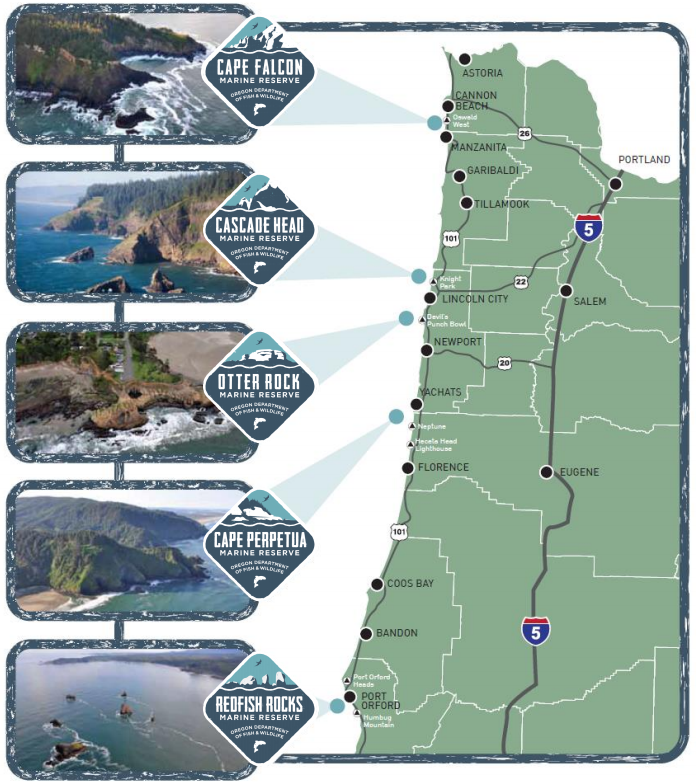
In 2008, the State of Oregon began to consider the establishment of a system of fewer than ten marine reserves along its coast as part of a continuing effort to move towards managing its marine waters and submerged lands using an ecosystem-based approach. The overall purpose of marine reserves is to provide an additional tool to help protect, sustain, or restore the nearshore marine ecosystem, its habitats, and species for the values they represent to present and future generations. Such action complements the collective efforts of Oregon, Washington, and California to manage the California Current in an ecosystem-based manner as expressed in the West Coast Governors’ Agreement on Ocean Health (Gregoire, Kulongoski, and Schwarzenegger, 2007).
A marine reserve is an area within Oregon's Territorial Sea or adjacent rocky intertidal area that is protected from all extractive activities, including the removal or disturbance of living and non-living marine resources, except as necessary for monitoring or research to evaluate reserve condition, effectiveness, or impact of stressors (OPAC Policy Recommendations Document, 2008).
Oregon has currently designated 5 Sites as marine reserves. The Cape Falcon, Cascade Head, Otter Rock, Cape Perpetua, and Redfish Rocks marine reserves are each named for local natural landmarks. Within the marine reserves all removal of marine life is prohibited, as is ocean development.
The Oregon Department of Fish and Wildlife (ODFW) manages and scientifically monitors these five sites. They are taking a deeper dive into Oregon's marine reserves to gain a better understanding of marine reserve protections, our nearshore waters, and coastal communities. The ODFW Marine Reserves Program is located at the coast in Newport, Oregon with six full-time staff.
Oregon Marine Reserve Goals and Objectives
In 2008, during the public planning phase for Marine Reserves in Oregon, the Ocean Policy Advisory Council recommended (document link) the following goal for Marine Reserves:
- Protect and sustain a system of fewer than ten marine reserves in Oregon’s Territorial Sea to conserve marine habitats and biodiversity;
- Provide a framework for scientific research and effectiveness monitoring; and
- Avoid significant adverse social and economic impacts on ocean users and coastal communities.
A system is a collection of individual sites that are representative of marine habitats and that are ecologically significant when taken as a whole. This goal is consistent with the larger ocean resources policy goal, Statewide Land Use Planning Goal 19.
The OPAC further recommended specific objectives for a Marine Reserve system in Oregon, which included:
- Protect areas within Oregon’s Territorial Sea that are important to the natural diversity and abundance of marine organisms, including areas of high biodiversity and special natural features.
- Protect key types of marine habitat in multiple locations along the coast to enhance resilience of nearshore ecosystems to natural and human-caused effects.
- Site fewer than ten marine reserves and design the system in ways that are compatible with the needs of ocean users and coastal communities. These marine reserves, individually or collectively, are to be large enough to allow scientific evaluation of ecological effects, but small enough to avoid significant adverse social and economic impacts on ocean users and coastal communities.
- Use the marine reserves as reference areas for conducting ongoing research and monitoring of reserve condition, effectiveness, and the effects of natural and human-induced stressors. Use the research and monitoring information in support of nearshore resource management and adaptive management of marine reserves.
- Although marine reserves are intended to provide lasting protection, individual sites may, through adaptive management and public process, later be altered, moved, or removed from the system, based on monitoring and reevaluation at least every five years.
The Oregon Marine Reserve planning process ultimately resulted in 2013 in the selection of five locations to be designated as Marine Reserves.
Oregon's Marine Reserves
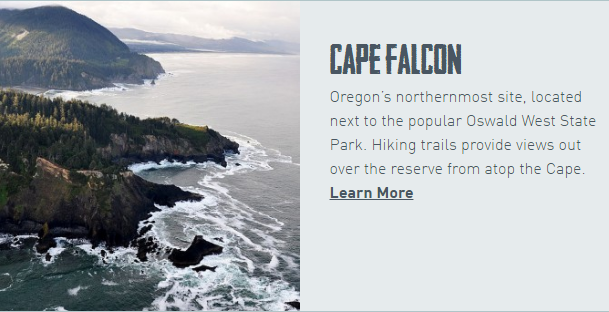 |
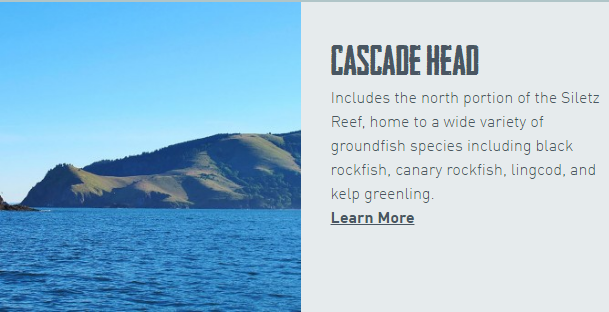 |
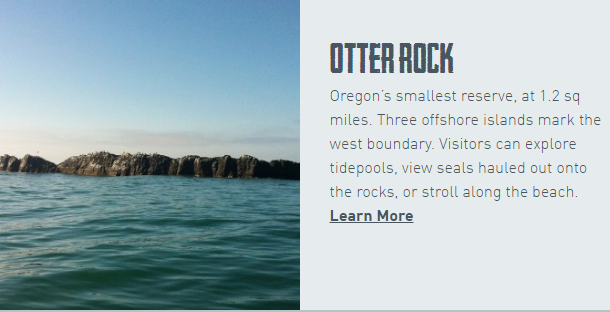 |
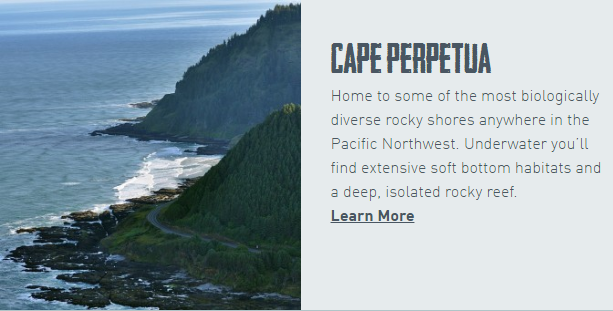 |
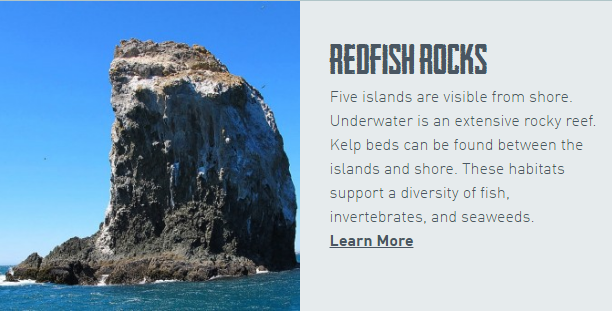 |
A full timeline of the Marine Reserves process may be found via the timeline section of this site at the top of this page. The State also initiated a comprehensive 10-year plan of management and study to evaluate the effectiveness of the new Marine Reserve system toward achieving the original goals and objectives of the State. More information on long-term monitoring of the Oregon Marine Reserves may be found at http://oregonmarinereserves.com/.




















